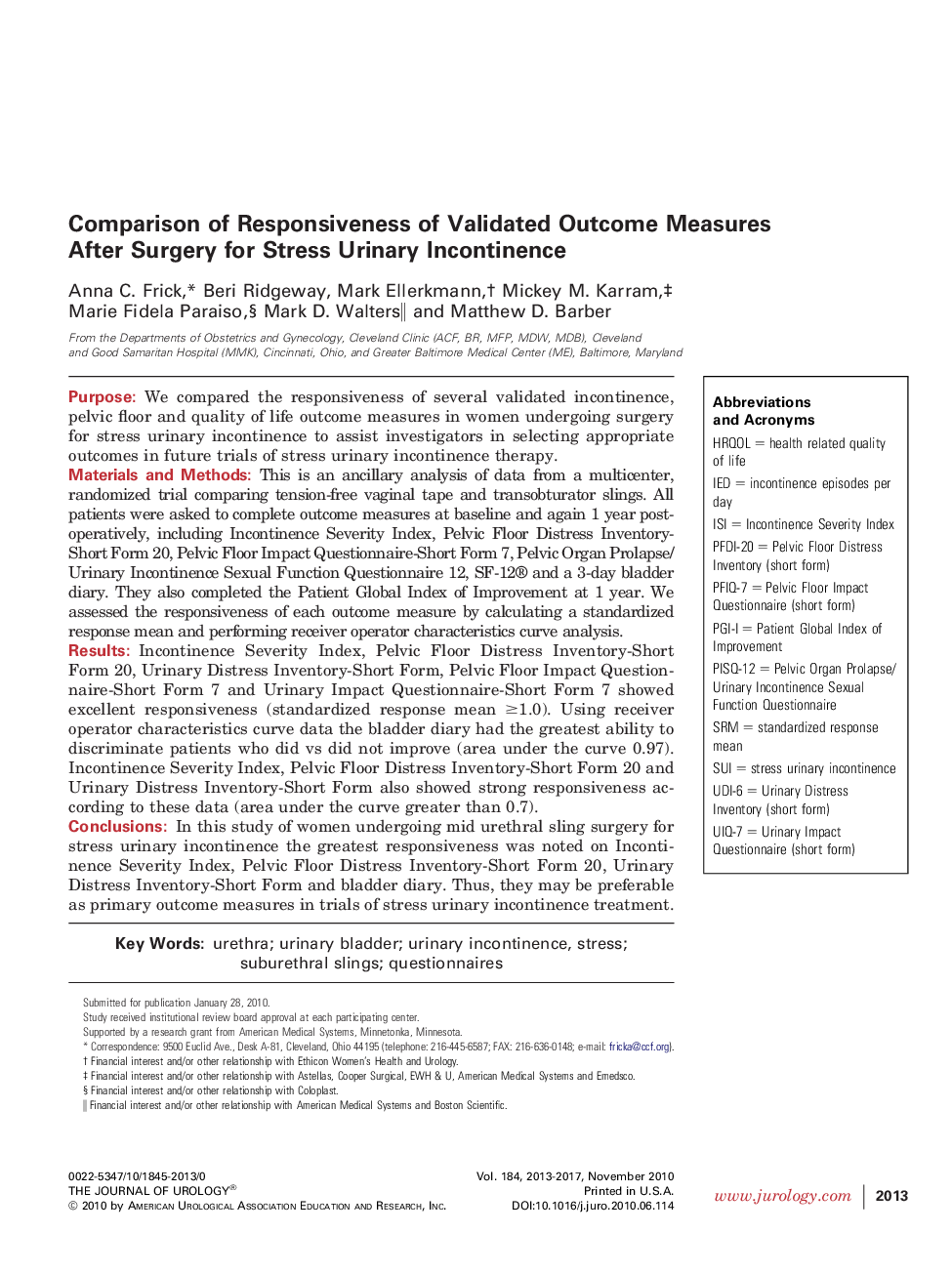| Article ID | Journal | Published Year | Pages | File Type |
|---|---|---|---|---|
| 3871657 | The Journal of Urology | 2017 | 5 Pages |
PurposeWe compared the responsiveness of several validated incontinence, pelvic floor and quality of life outcome measures in women undergoing surgery for stress urinary incontinence to assist investigators in selecting appropriate outcomes in future trials of stress urinary incontinence therapy.Materials and MethodsThis is an ancillary analysis of data from a multicenter, randomized trial comparing tension-free vaginal tape and transobturator slings. All patients were asked to complete outcome measures at baseline and again 1 year postoperatively, including Incontinence Severity Index, Pelvic Floor Distress Inventory-Short Form 20, Pelvic Floor Impact Questionnaire-Short Form 7, Pelvic Organ Prolapse/Urinary Incontinence Sexual Function Questionnaire 12, SF-12® and a 3-day bladder diary. They also completed the Patient Global Index of Improvement at 1 year. We assessed the responsiveness of each outcome measure by calculating a standardized response mean and performing receiver operator characteristics curve analysis.ResultsIncontinence Severity Index, Pelvic Floor Distress Inventory-Short Form 20, Urinary Distress Inventory-Short Form, Pelvic Floor Impact Questionnaire-Short Form 7 and Urinary Impact Questionnaire-Short Form 7 showed excellent responsiveness (standardized response mean ≥1.0). Using receiver operator characteristics curve data the bladder diary had the greatest ability to discriminate patients who did vs did not improve (area under the curve 0.97). Incontinence Severity Index, Pelvic Floor Distress Inventory-Short Form 20 and Urinary Distress Inventory-Short Form also showed strong responsiveness according to these data (area under the curve greater than 0.7).ConclusionsIn this study of women undergoing mid urethral sling surgery for stress urinary incontinence the greatest responsiveness was noted on Incontinence Severity Index, Pelvic Floor Distress Inventory-Short Form 20, Urinary Distress Inventory-Short Form and bladder diary. Thus, they may be preferable as primary outcome measures in trials of stress urinary incontinence treatment.
